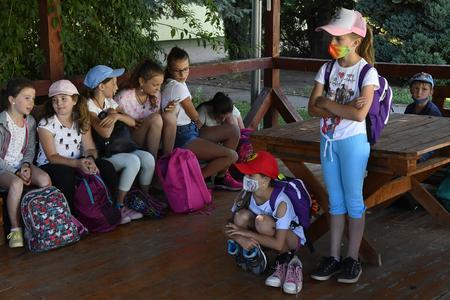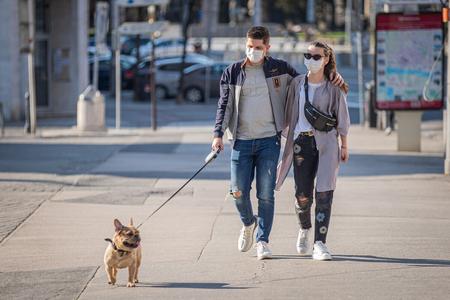Our paywall policy:
The Slovak Spectator has decided to make all the articles on the special measures, statistics and basic information about the coronavirus available to everyone. If you appreciate our work and would like to support good journalism, please buy our subscription. We believe this is an issue where accurate and fact-based information is important for people to cope.
Slovakia has entered the first stage of a second wave of the coronavirus pandemic.
As a result, the Health Ministry is currently redefining hospital beds in 10 selected facilities across the country, in line with the recently adopted pandemic plan. This will concern 3,503 beds in total, in infectious disease departments which is about 233 beds per hospital and nearly 500 per region, the SITA newswire reported.
These beds will be used by patients who are positive for COVID-19. The others will be for other patients.
National emergency in the third stage

The second stage is defined by a worsening situation, beds becoming occupied by more than one half and new outbreaks occurring. The plan suggests that the Health Ministry should redefine beds for coronavirus patients in 14 hospitals with infectious disease departments and clinics.
In the event of the third stage, a national emergency would be declared, SITA wrote.
In this situation, the occupancy of hospital beds would have to exceed 75 percent, while the respective district authorities would have to put the emerging hotspots into quarantine in order to slow down the spread of the disease and prevent the health sector from collapsing.
In addition, more hospitals will have to single out beds for coronavirus patients based on an order from the Health Ministry.
Semaphore for nursing and medical facilities
The pandemic plan also details the so-called semaphore system for nursing homes, primary health care facilities and hospitals. These will be re-specialised based on the stage the disease has entered.

“The Health Ministry’s Health Analyses Institute has specified 14 indicators in three categories,” said Health Minister Marek Krajčí (OĽaNO), as quoted by SITA. “Based on these, the measures in respective regions will move from green to orange, and then to black.”
The data will then be provided to the regional branches of the Public Health Authority that will decide on further steps, he added.
The pandemic plan also contains a fourth stage that should prepare the country for the return to the inter-pandemic period, SITA wrote.
Stages 0-4
Stage 0 starts after the pandemic is declared by the World Health Organisation. The Public Health Authority (ÚVZ) is expected to propose the declaration of an emergency situation. In the case of the current coronavirus pandemic, both were declared in March 2020.
Slovakia is currently at Stage 1, which starts when the epidemic situation worsens and the number of infected and hospitalised people is increasing. During this stage, police controls on borders close to the disease outbreaks on the territory of a neighbouring state should be introduced. It also suggests closing localities where outbreaks have occurred and securing emergency supplies, public order and security, as well as medical care. At the same time, the plan recommends implementing further measures like the disinfection of public transport.
The plan suggests securing a COVID-19 vaccine for Slovakia.
Stage 2 starts if the situation continues worsening. In this case, more than 50 percent of hospital beds at clinics designated for infectious diseases must be occupied and the number of new outbreaks will increase.
Apart from closing the outbreak localities, local counter-epidemic measures for closing the shops and bans for organising public events should be put in place. The plan also suggests securing accommodation capacities in isolation facilities and creating anti-conflict teams. This stage also contains a proposal to launch e-quarantine, to prepare measures to re-introduce temporary border controls, and to transport Slovak citizens back home.
Schools should be closed during this stage, too, and the state should also secure medical care for nursing home clients, TASR wrote. The Health Ministry should also ensure selected hospitals set aside beds for infected patients.
Respective authorities are expected to deal with the impacts on the salaries of people who need to stay in isolation, as well as payments to social insurance and unemployment benefits.
Stage 3 will be introduced if the situation continues worsening and the number of infected people is still on the rise. This means that a national emergency will be declared, and measures from the previous stage will continue. This includes the disinfection of places with many people, as well as pavements and places close to the quarantined localities.
In this phase, more than 75 percent of hospital beds in clinics designated for infectious diseases should be occupied, while a shortage of medical workers is expected due to the infections. More hospitals will be asked to set aside beds for patients. The authorities will continue closing outbreak localities.
Stage 4 involves a gradual return to the inter-pandemic period and the lifting of measures. A national emergency would be cancelled during this stage.



 Illustrative stock photo (source: SME)
Illustrative stock photo (source: SME)